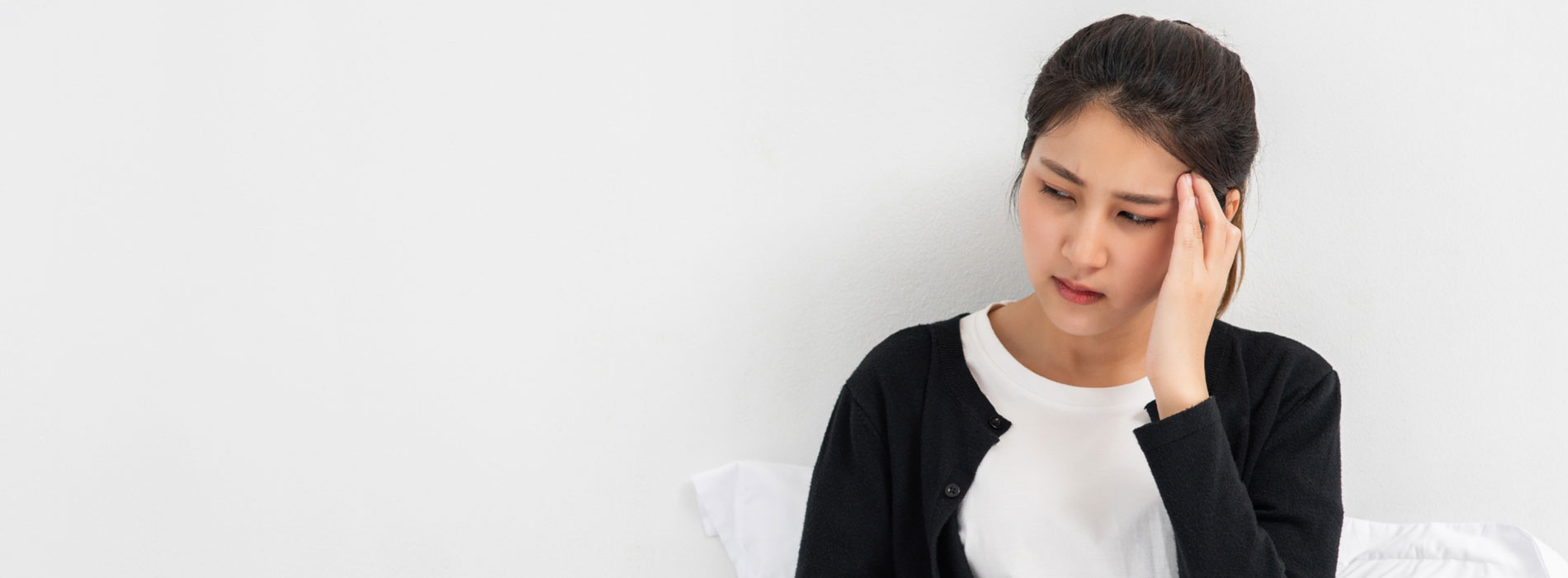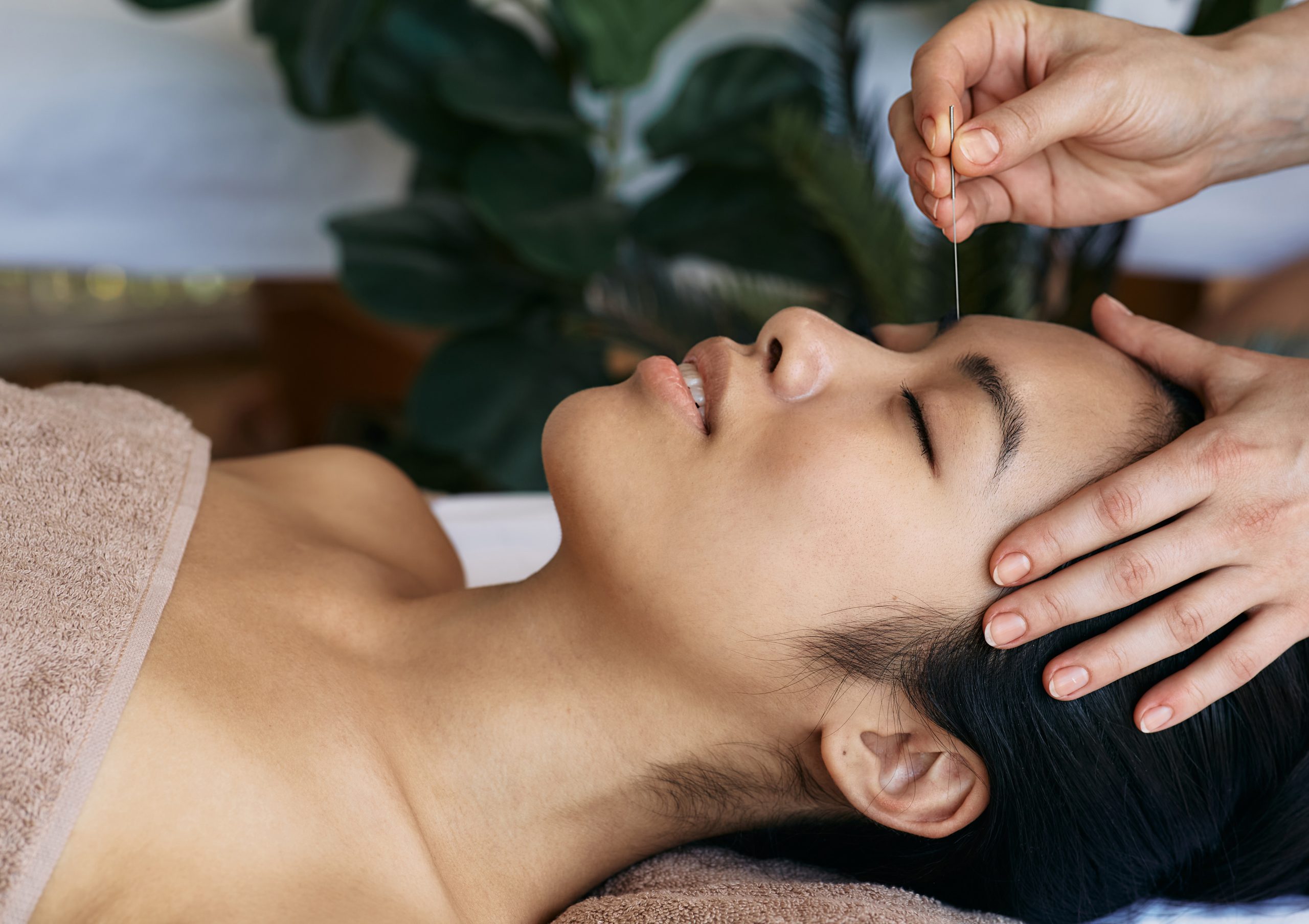
Migraine is a common neurological disorder that can be very distressing and disabling. About 15% of the population suffers from migraine at some stage in their lives. Although migraine can affect people of all ages, it most commonly occurs in your 20s and 30s. Migraine can sometimes be so severe that it significantly impacts upon quality of life. Currently the available medication to treat and prevent migraines only work 50% of the time and unfortunately, the most effective medications often have side effects that are intolerable. Considering this, many people seek natural headache remedies including Chinese herbal medicine and acupuncture for migraines and headaches as alternative treatment options.

Acupuncture was developed in China and the use of acupuncture is thought to date back to about 200BC. It is the technique of piercing the body with very fine needles to stimulate anatomical points. These needles get inserted into specific points on your body to promote a healthy flow of Qi (also called Chi), which is your energy force. A typical acupuncture session begins with a discussion of your problem and a physical examination. The acupuncturist may then stimulate certain points on the body by inserting the fine metal needles. The needles used in acupuncture are typically much finer than the needles used to take blood, and the process is usually painless. Once the needles are inserted, they will be left in place for 20 to 40 minutes while you lie still, and hopefully relaxed.
The medical community’s research and opinion on acupuncture is mixed. Some studies point out that “sham” (also called simulated) acupuncture works just as well as real acupuncture. Other studies affirm that acupuncture can give relief to people that experience chronic headache pain. They demonstrate that acupuncture is an effective method for relieving migraines. The World Health Organization (WHO) has endorsed acupuncture as a promising treatment for pain since 1979.
Acupuncture for migraines and headaches seeks to restore the flow of positive energy throughout your body. From a modern medical perspective, acupuncture stimulates various systems of your body. This may trigger a healing response.
Acupuncture for migraines and headaches is generally considered to be safe if delivered by adequately trained practitioners. The most frequent side-effects are mild and include: minor bruising or bleeding, usually on needle withdrawal (3%), worsening of existing symptoms (1%) which usually lasts no more than two days and is sometimes associated with a good overall outcome; drowsiness, relaxation, or euphoria (3%) which is often experienced as pleasurable (and if so is not an adverse event!), and pain at the needling site (1%). Severe, extremely rare side-effects include a puncture lung or heart membrane (this is avoided by correct technique); transmission of blood-borne diseases (e.g. hepatitis C), avoided by using single-use, sterile, disposable needles, and skin infection (which is possible with ear acupuncture, particularly if indwelling studs are used).
We use acupuncture to help with migraines and headaches. We may also use remedial massage and Chinese herbal medicines to enhance the effect depending on your conditions. You’ll probably need to have regular acupuncture sessions (two sessions per week) to experience the most benefit.
If you would like to learn more about acupuncture for migraines and headaches, or would like to book an initial consultation with one of our professional and experienced acupuncturists, please call your closest location (Perth Clinic: 57/76 Newcastle Street (08) 9228 8828, Subiaco Clinic: 6/1 Sheen Street (08) 9380 4171). Alternatively, you can send us your queries through our online contact page.
Migraine is a common neurological disorder that can be very distressing and disabling. About 15% of the population suffers from migraine at some stage in their lives. Although migraine can affect people of all ages, it most commonly occurs in your 20s and 30s. Migraine can sometimes be so severe that it significantly impacts upon quality of life. Currently the available medication to treat and prevent migraines only work 50% of the time and unfortunately, the most effective medications often have side effects that are intolerable. Considering this, many people seek natural headache remedies including Chinese herbal medicine and acupuncture for migraines and headaches as alternative treatment options.

Acupuncture was developed in China and the use of acupuncture is thought to date back to about 200BC. It is the technique of piercing the body with very fine needles to stimulate anatomical points. These needles get inserted into specific points on your body to promote a healthy flow of Qi (also called Chi), which is your energy force. A typical acupuncture session begins with a discussion of your problem and a physical examination. The acupuncturist may then stimulate certain points on the body by inserting the fine metal needles. The needles used in acupuncture are typically much finer than the needles used to take blood, and the process is usually painless. Once the needles are inserted, they will be left in place for 20 to 40 minutes while you lie still, and hopefully relaxed.
The medical community’s research and opinion on acupuncture is mixed. Some studies point out that “sham” (also called simulated) acupuncture works just as well as real acupuncture. Other studies affirm that acupuncture can give relief to people that experience chronic headache pain. They demonstrate that acupuncture is an effective method for relieving migraines. The World Health Organization (WHO) has endorsed acupuncture as a promising treatment for pain since 1979.
Acupuncture for migraines and headaches seeks to restore the flow of positive energy throughout your body. From a modern medical perspective, acupuncture stimulates various systems of your body. This may trigger a healing response.
Acupuncture for migraines and headaches is generally considered to be safe if delivered by adequately trained practitioners. The most frequent side-effects are mild and include: minor bruising or bleeding, usually on needle withdrawal (3%), worsening of existing symptoms (1%) which usually lasts no more than two days and is sometimes associated with a good overall outcome; drowsiness, relaxation, or euphoria (3%) which is often experienced as pleasurable (and if so is not an adverse event!), and pain at the needling site (1%). Severe, extremely rare side-effects include a puncture lung or heart membrane (this is avoided by correct technique); transmission of blood-borne diseases (e.g. hepatitis C), avoided by using single-use, sterile, disposable needles, and skin infection (which is possible with ear acupuncture, particularly if indwelling studs are used).
We use acupuncture to help with migraines and headaches. We may also use remedial massage and Chinese herbal medicines to enhance the effect depending on your conditions. You’ll probably need to have regular acupuncture sessions (two sessions per week) to experience the most benefit.
If you would like to learn more about acupuncture for migraines and headaches, or would like to book an initial consultation with one of our professional and experienced acupuncturists, please call your closest location (Perth Clinic: 57/76 Newcastle Street (08) 9228 8828, Subiaco Clinic: 6/1 Sheen Street (08) 9380 4171). Alternatively, you can send us your queries through our online contact page.

© Copyright 2022. Baolin Acupuncture & Chinese Medicine Centre. All Rights Reserved.